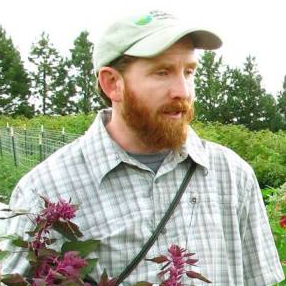Plant Breeding for Sustainable Agriculture
A special issue of Sustainability (ISSN 2071-1050).
Deadline for manuscript submissions: closed (31 July 2011) | Viewed by 202620
Special Issue Editor
Interests: farmer participatory research of organic hop cropping systems in the Yakima Valley; organic wheat breeding; perennial wheat breeding and agronomy
Special Issue Information
Dear Colleagues,
The science of plant breeding has played a profound role in defining and improving agricultural systems productivity worldwide. The earliest plant breeders
- farmers - domesticated countless wild species and improved these crops through recurrent selection. In the 1960's and 70's, the 'Green Revolution' increased global grain yields of cereal crops to unprecedented levels, primarily through the innovations contributed through the complementary synergistic interactions of plant breeding and agronomy. Though increases in productivity remain paramount, the challenges we face today as an agricultural community reach far beyond improvements in yield. These challenges include developing varieties with the capacity to achieve high yields in reduced chemical-input systems and with the genetic diversity needed to maintain yield stability in fluctuating climatic conditions. Relatively novel traits that should be targeted to benefit a truly sustainable agriculture include improving weed suppression ability, enhancement of nutritional value, and optimization of plant interactions with microbial communities in the soil, among others. Farmer participatory breeding strategies in de-centralized and diverse selection environments also have the potential to encourage more renewable and resilient agricultural systems. This special issue will focus on the contribution of plant breeding to a more sustainable global agriculture through the collaborative lens of a diverse group of economists, sociologists and plant breeders worldwide.
Dr. Kevin Murphy
Guest Editor
Keywords
- renewable agriculture
- farming
- plant breeding
- participatory breeding
- nutritional value
- climate change
- genetic diversity
- soil
- ecology
- yield stability
- organic agriculture
Benefits of Publishing in a Special Issue
- Ease of navigation: Grouping papers by topic helps scholars navigate broad scope journals more efficiently.
- Greater discoverability: Special Issues support the reach and impact of scientific research. Articles in Special Issues are more discoverable and cited more frequently.
- Expansion of research network: Special Issues facilitate connections among authors, fostering scientific collaborations.
- External promotion: Articles in Special Issues are often promoted through the journal's social media, increasing their visibility.
- Reprint: MDPI Books provides the opportunity to republish successful Special Issues in book format, both online and in print.
Further information on MDPI's Special Issue policies can be found here.





